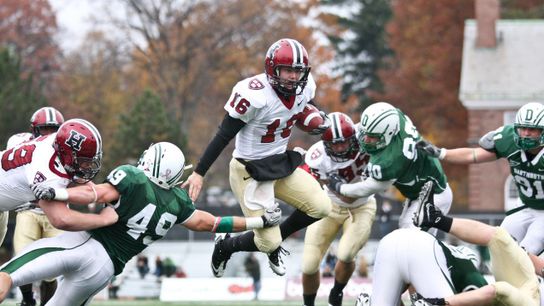In 2016, the Ivy League made a small change to its kickoffs that the league hoped would have a large effect.
And now, two full seasons later, the data is in, and it's good news all around.
During the 2015 season, kickoffs accounted for 6 percent of plays in all Ivy League games but made up 21 percent of all concussions in league games. To combat this, league schools moved kickoffs from the 35-yard line to the 40 to help kickers boot the ball into the end zone. To incentivize teams to use those five extra yards to actually kick the ball into the end zone and instruct their kickers to boot a rainbow that will land just shy of the goal line, the Ivy League brought touchbacks out to the 20, not the 25.
Two years later, the change has worked.
According to a study published in the Journal of American Medical Association, touchbacks surged from 17.9 percent of kickoffs to nearly half -- 48 percent. At the same time, the number of concussions on kickoffs plummeted. From 2013-15, kickoffs created 10.9 concussions per 1,000 kickoffs.
In 2016-17, kickoffs were responsible for just 2.04 concussions per 1,000 kickoffs.
In March, the NCAA's Playing Rules Oversight Panel enforced a new association-wide change to kickoffs that now allows returners to call for a fair catch within the field of play and still take the ball out to the 25-yard line.
It's far too early to know whether that new rule will have the same affect on player safety as the NCAA's, but the Ivy League study shows it's possible to make kickoffs safer without removing the play altogether.
